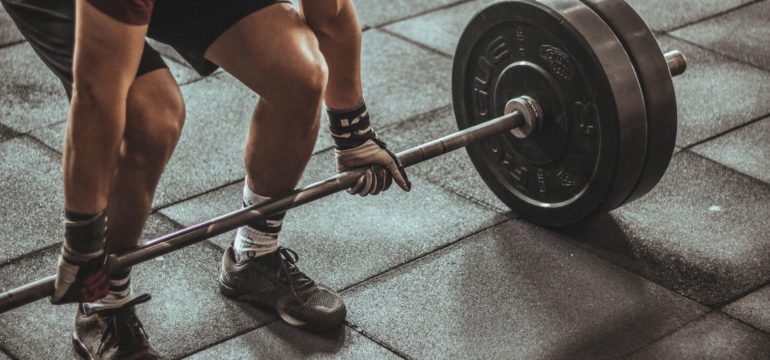BY: ERICA KOSMERL & ELLIOT DHUEY
After long a day of work, the last thing you want to do is to use up more of your already-depleted energy by going to the gym. You try to talk yourself into binge-watching your favorite Netflix series, but then consider being productive and going to the gym. The internal struggle is real.
So you set down the remote, gear up in some activewear and mix up a hearty scoop of pre-workout. As you chug it back, you realize you’re at the point of no return. You’re going to the gym. After 20 minutes, it all sets in. You feel the exhilarating rush of pre-workout taking effect. The desire to sit on your couch and befriend your remote no longer exists. You’re on your way to slay your workout.
Recently I’ve been asked, “What is a pre-workout?” and “why do you use it?” Because of the vast amount of options, I struggled to give the answer my friend was looking for. After collecting my thoughts, I realized there are four main functions a pre-workout should provide. To start off, a pre-workout is a supplemental beverage consumed prior to your workout that helps energize you, increases your performance, provides focus and regulates your pump. The focus of this article is to help you navigate common pre-workout components and their functionality to improve your exercise experience.
Energy– the drive to be active
The first word that comes to mind with pre-workout is ENERGY. Will we have enough of it to make it through our workout or even get us to the gym in the first place? Most people have a cup of coffee to make it through the work day because it has one essential ingredient – caffeine. Caffeine gives you the perception of energy which improves your capacity to finish out your task (Peeling et al. 2018). When it comes to exercise, you need that boost to keep you energized.
While caffeine may ultimately lead you to a crash, theacrine (another component commonly found in pre-workouts) will reduce the crash and maintain effectiveness overtime by overcoming caffeine-developed tolerance (Kuhman et al. 2015; Taylor et al. 2016).
Performance– the ability to execute
So with that kick-start of energy, you’ve made it to the gym—now what? Your next step is to perform, which brings us to the next role of pre-workouts– the performance factor.
BCAAs, or branched-chain amino acids, are limiting amino acid building blocks of proteins shown to potentially support an anabolic state if taken prior to your workout (Kato et al. 2018; Helms et al. 2014). By enjoying a pre-workout with a ratio of BCAAs of 2:1:1 leucine, isoleucine and valine, you may be promoting growth of lean muscle mass.Many pre-workouts also include beta-alanine, a component known to create the sensation of paresthesia, or a tingling sensation. Most importantly beta-alanine helps to reduce the feeling of muscle fatigue by buffering muscle pH from lactic acid build up and, as a result, allows you to maintain your workload for a longer duration (Helms et al. 2014).
Alpha-glycerylphosphorylcholine (A-GPC) helps facilitate neuro-muscular interactions which will maintain performance during exhaustive exercise. A-GPC is a source of choline that helps facilitate neural transmission after repeated muscle exhaustion (which results in reduced activity of motor neurons). This ingredient will ultimately lead to increased muscle performance (Bellar et al. 2015).One more key factor to add to this performance melting pot—creatine. Creatine is already present in the human body, but continued dietary supplementation can increase your total creatine pool and help keep ATP levels (our body’s energy currency) high in between those rigorous sets (Cooper et al. 2012). Overall, creatine has been shown to enhance athletic performance by allowing you to complete higher intensity workouts.

By Victor Freitas at Pexels
Focus– the mindset to direct your attention
After overhearing a few repetitious grunts and getting distracted by the person beside you, you begin to lose focus. Don’t worry, pre-workout has a solution to maintain your concentration. There are three main ingredients that contribute to your focus: Huperzine A, tyrosine, and L-theanine.
Huperzine A reversibly inhibits hippocampal neurogenesis in the brain which plays a role in mood regulation as well as many other roles that are important for positive workout session (Ma et al. 2013).
Tyrosine is an amino acid and a precursor to many body neurotransmitters like catecholamine and hormones like dopamine, norepinephrine and epinephrine. Exercise creates a shift in the neuroendocrine and metabolic systems, leading to fatigue. Tyrosine will help regulate the systemic shift by increasing levels catecholamine and improving cognitive performance (Sutton et al. 2005).
L-theanine is a component from tea that enhances cognitive function. Theanine alone functions by regulating glutamate in the hippocampus which provides some improved cognitive function. However, the combination of theanine and caffeine work synergistically to maintain cognitive focus (or attention) (Kahathuduwa et al. 2017).
All three ingredients for focus facilitate a workout that is productive to your targeted task. You will know it’s working when you get into the legendary ZONE. Getting into the zone can be tricky and distracting, but with these key ingredients for focus, it makes getting there easier!
Pump– increasing blood flow to body tissues
Now the person beside you is in between sets, and you overhear him talking about his pump with his buddy. No, he’s not referring to his tire pump, but rather, the swelling in your muscles as a results of increased blood flow. Yes, your body PUMP. There are two common ingredients used to increase your pump: nitric oxide and betaine.
Nitric oxide is naturally synthesized in the body with L-arginine, oxygen and other cofactors to help promote vasodilation (or widening/ relaxing blood vessels). During your workout, you need to keep the blood flowing to distribute and replenish nutrients, allowing your muscles to recover quickly in order to pump out your next set (Bloomer 2010). Without nitric oxide, the muscles can become easily depleted leading to an unproductive experience.
Seafood, spinach, beets and other foods contain betaine, a compound also found in pre-workouts to promote the pump. Betaine is an osmolyte, meaning it prevents cellular dehydration and directs blood flow to the engaged muscles and protects cells from internal stressors which negate your workout (Craig 2004).

By Victor Freitas at Pexels
Conclusion
Now that you’ve completed a satisfying workout, you can pick up your Netflix show where you left off feeling good about your choices. Now you understand that taking a pre-workout not only helps with energy, performance, focus and your pump, but also helps motivate you to get to the gym in the first place. Highlight your week with smart choices that boost your motivation and wellbeing by considering trying a pre-workout.
Disclaimer: There are many varieties of performance products that make bold, unproven claims. This should be taken into consideration when selecting a pre-workout. Additionally, you should always consult with your physician to see if pre-workout is a good choice for you before consuming products that may alter your body function.
References
Bellar D, LeBlanc NR, Campbell B (2015) The effect of 6 days of alpha glycerylphosphorylcholine on isometric strength. J Int Soc Sports Nutr 12:42. doi: 10.1186/s12970-015-0103-x
Bloomer RJ (2010) Nitric Oxide Supplements for Sports: Strength Cond J 32:14–20. doi: 10.1519/SSC.0b013e3181bdaf89
Cooper R, Naclerio F, Allgrove J, Jimenez A (2012) Creatine supplementation with specific view to exercise/sports performance: an update. J Int Soc Sports Nutr 9:33. doi: 10.1186/1550-2783-9-33
Craig SA (2004) Betaine in human nutrition. The American Journal of Clinical Nutrition 80:539–549. doi: 10.1093/ajcn/80.3.539
Helms ER, Aragon AA, Fitschen PJ (2014) Evidence-based recommendations for natural bodybuilding contest preparation: nutrition and supplementation. Journal of the International Society of Sports Nutrition 11:. doi: 10.1186/1550-2783-11-20
Kahathuduwa CN, Dassanayake TL, Amarakoon AMT, Weerasinghe VS (2017) Acute effects of theanine, caffeine and theanine-caffeine combination on attention. Nutr Neurosci 20:369–377. doi: 10.1080/1028415X.2016.1144845Kato H, Suzuki K, Bannai M, Moore DR (2018) Branched-Chain Amino Acids Are the Primary Limiting Amino Acids in the Diets of Endurance-Trained Men after a Bout of Prolonged Exercise. J Nutr 148:925–931. doi: 10.1093/jn/nxy048
Kuhman DJ, Joyner KJ, Bloomer RJ (2015) Cognitive Performance and Mood Following Ingestion of a Theacrine-Containing Dietary Supplement, Caffeine, or Placebo by Young Men and Women. Nutrients 7:9618–9632. doi: 10.3390/nu7115484
Ma T, Gong K, Yan Y, et al (2013) Huperzine A promotes hippocampal neurogenesis in vitro and in vivo. Brain Res 1506:35–43. doi: 10.1016/j.brainres.2013.02.026
Sutton EE, Coill MR, Deuster PA (2005) Ingestion of tyrosine: effects on endurance, muscle strength, and anaerobic performance. Int J Sport Nutr Exerc Metab 15:173–185. doi: 10.1123/ijsnem.15.2.173
Peeling P, Binnie MJ, Goods PSR, et al (2018) Evidence-Based Supplements for the Enhancement of Athletic Performance. Int J Sport Nutr Exerc Metab 28:178–187. doi: 10.1123/ijsnem.2017-0343
Taylor L, Mumford P, Roberts M, et al (2016) Safety of TeaCrine®, a non-habituating, naturally-occurring purine alkaloid over eight weeks of continuous use. Journal of the International Society of Sports Nutrition 13:. doi: 10.1186/s12970-016-0113-3







Before workout, we need pre-workout dietary supplements for our body for energy that we needed at gym. You have mentioned very nicely here on this post too, And main thing you said that firstly we have to consult your physician.
Many pre-workouts include beta-alanine. Can I ask, Science Meets Food? Is Beta-alanine in pre-workouts dangerous?